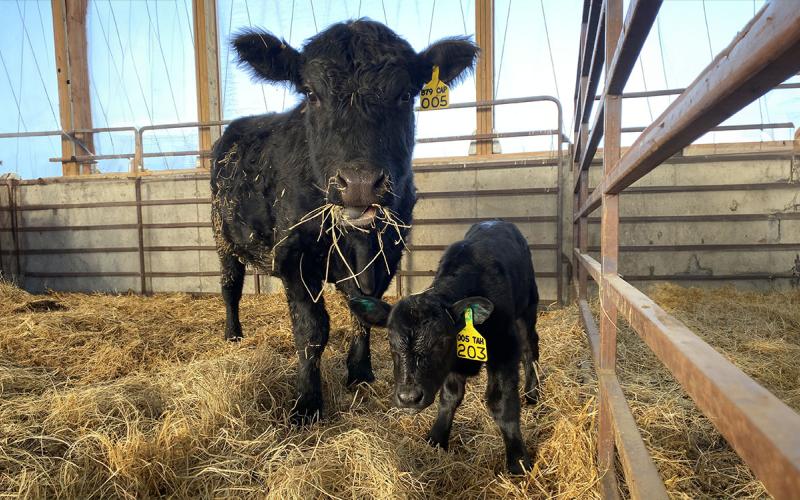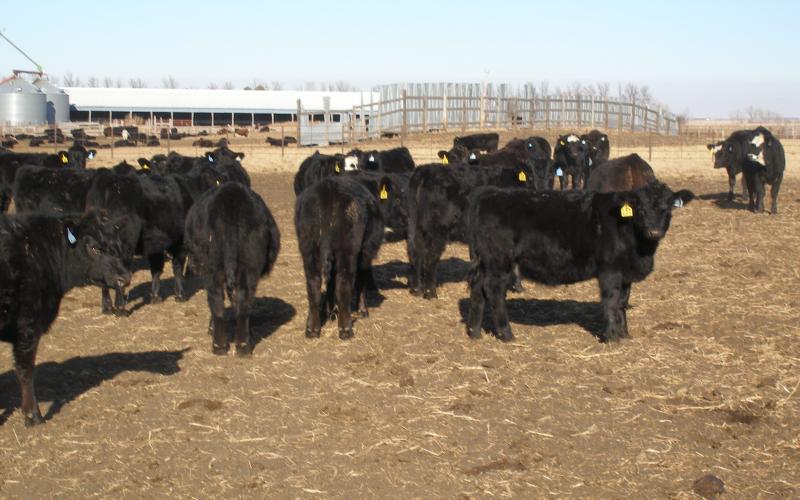Originally written by Olivia Amundson, former SDSU Extension Cow/Calf Field Specialist.
Spring calving for some is underway, while for others is approaching quickly. This indicates the next breeding season is right around the corner. Percent of calf crop weaned on any operation is the single largest factor influencing profitability. Subsequently, herd bulls influence herd fertility more than any other single animal. Soundness and fertility of these animals is essential to the future calf crop and profitability of the operation.
Breeding soundness evaluations (BSE) involve guidelines that can be performed by your veterinarian which include physical examination (evaluating internal and external genitalia), measurement of scrotal circumference, and evaluation of semen quality. In order for a breeding soundness evaluation to be successful, a bull should be evaluated 30 to 60 days prior to the upcoming breeding season. A bull must have 30% sperm motility, 70% normal sperm morphology and a minimum scrotal circumference based on age to successfully complete a BSE. Any bulls with unsatisfactory results then have time to retest or be replaced.
The physical exam evaluates the bulls overall mating ability. This includes any physical capabilities a bull needs in order to breed a cow such as adequate eyesight, smell, teeth, feet and legs, and nutritional level evaluated by body condition score (BCS; where 1 = emaciated and 9 = obese). The BCS of 6 is recommended prior to the breeding season. During the breeding season, bulls can easily lose 100-200lbs, which translates to 1-2 BCS depending on number expected to service and distance required to travel during breeding. Therefore, it’s important to observe bulls prior to the upcoming breeding season to ensure they are at the correct BCS for the upcoming breeding season.
Soundness of feet and legs is crucial for the success of the breeding season. Inability to travel and mount impairs the bull’s ability to mate. Observe bulls for any structural unsoundness, disease or injury to the penis or prepuce (foreskin). Remember, libido is not measured during a BSE; therefore, frequent monitoring in a breeding environment to ensure desire is there and that he can fully insert and accomplish the breeding process. If bulls have problems servicing cows, detecting cows in heat, or trouble with mobility and maintaining BCS, then a replacement should quickly be found. Scrotal circumference measured during a BSE is a useful indicator of puberty and is directly related to sperm quantity and quality. The larger the scrotal size, the more sperm-producing tissue he has which generates into a greater amount of sperm being produced.
Semen quality includes ejaculate volume, sperm cell motility, and sperm cell morphology (anatomical development of the sperm) which is evaluated under a microscope. Sperm motility is evaluated by calculating the amount of sperm moving forward, or “headfirst”. Sperm morphology is calculated by evaluating the percentage of normal spermatozoa based on proper shape. Bulls classified as “satisfactory” meet the requirements for the physical exam, scrotal circumference, and semen quality. Those that fail should be retested four to six weeks later as spermatogenesis is a continuous process and results may change over time.
Reproductive diseases should also be assessed prior to the breeding season. Bovine trichomoniasis or “trich” is a venereal disease produced by a protozoal organism found living in the sheath of a bull and is passed to a female during the process of mating. Infected females will then suffer inflammation of the reproductive tract that results in loss of pregnancy. Address the need to test your bulls for the reproductive disease with your veterinarian.
As breeding season approaches much of the work goes to preparing the cow herd for optimal fertility. However, remember the significance of your herd bulls and don’t assume once out with the cow herd they will complete their duties. Take the time to properly care and maintain your herd bulls for a successful breeding season.


